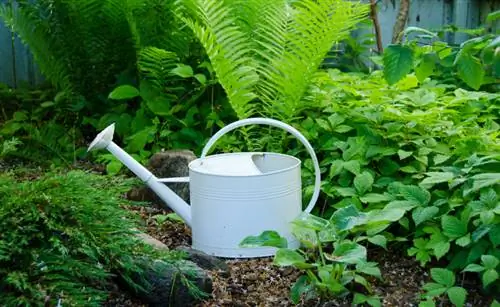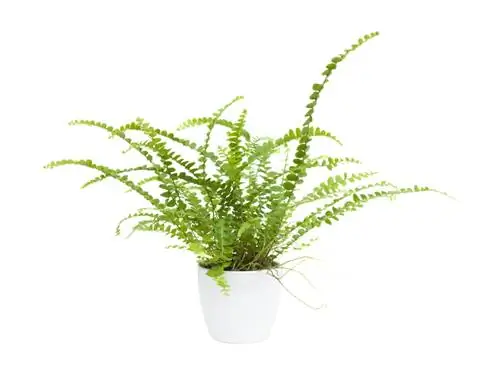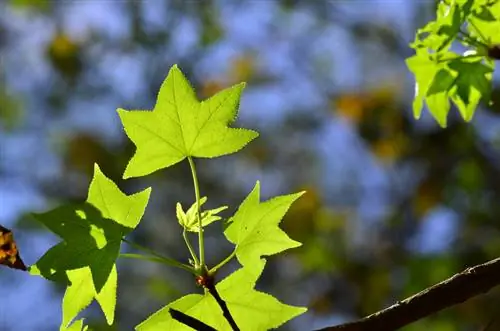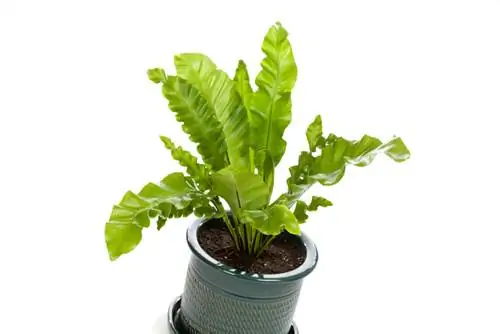- Author admin [email protected].
- Public 2023-12-16 16:46.
- Last modified 2025-01-23 11:20.
Its entire fronds clearly set it apart from other fern species. Thanks to its low height of 90 cm, the deer's tongue fern is not only suitable for outdoor cultivation, but also for pot cultivation. What care does he need?

How do you properly care for the deer's tongue fern?
To care for the deer's tongue fern, you should use low-lime water for watering, always keep the soil moist but not waterlogged, spray the plant regularly or ensure high humidity and fertilize every 2-3 weeks during the growing season. No cutting necessary, repotting in spring if the roots are well established.
Should you water the deertongue fern?
Deer's tongue fern in the garden only needs to be watered in longer dry periods and in a sunny location. On the other hand, deer's tongue fern in the pot in the apartment needs regular watering. When watering, you should use low-lime to lime-free water.
The soil should be kept moist. It must not be dripping with moisture on one side and not dry out on the other side. Both contradict the requirements of this plant. In addition, it is advisable to spray deer's tongue fern in the pot frequently to create high humidity. Alternatively, a coaster can be filled with stones and water.
Are fertilizers necessary?
Like other fern species, the deer's tongue fern does not place a high value on fertilizer. It copes with a nutrient-poor substrate. Fertilizing is particularly recommended for pot culture:
- Use liquid fertilizer or slow-release fertilizer (€12.00 on Amazon) in stick form
- use only 50% of the normal dose
- fertilize every 2 to 3 weeks during the main growing season between May and September
- fertilize gently once a month in winter
Does the plant need a cut?
A cut is not necessary. The fronds are wintergreen. Old and dried out fronds can be removed if necessary. The dried leaves can be used as humus for the plant.
When should the deer tongue fern be repotted?
If grown in a pot, the deer's tongue fern should be repotted when the pot is well rooted. The rhizomes are placed vertically in the new substrate. They should be halfway out of the ground. The best time for repotting is in spring.
What pests and diseases can occur?
As a rule, there are no pests or diseases. Only with poor care and an unsuitable location is there a risk of an infestation with scale insects and thrips. Air that is too warm and dry, for example in the living room, causes problems for the deer's tongue fern.
Tips & Tricks
In winter, the deer's tongue fern should not be exposed to winter sun. In addition, it should only be watered sparingly.






